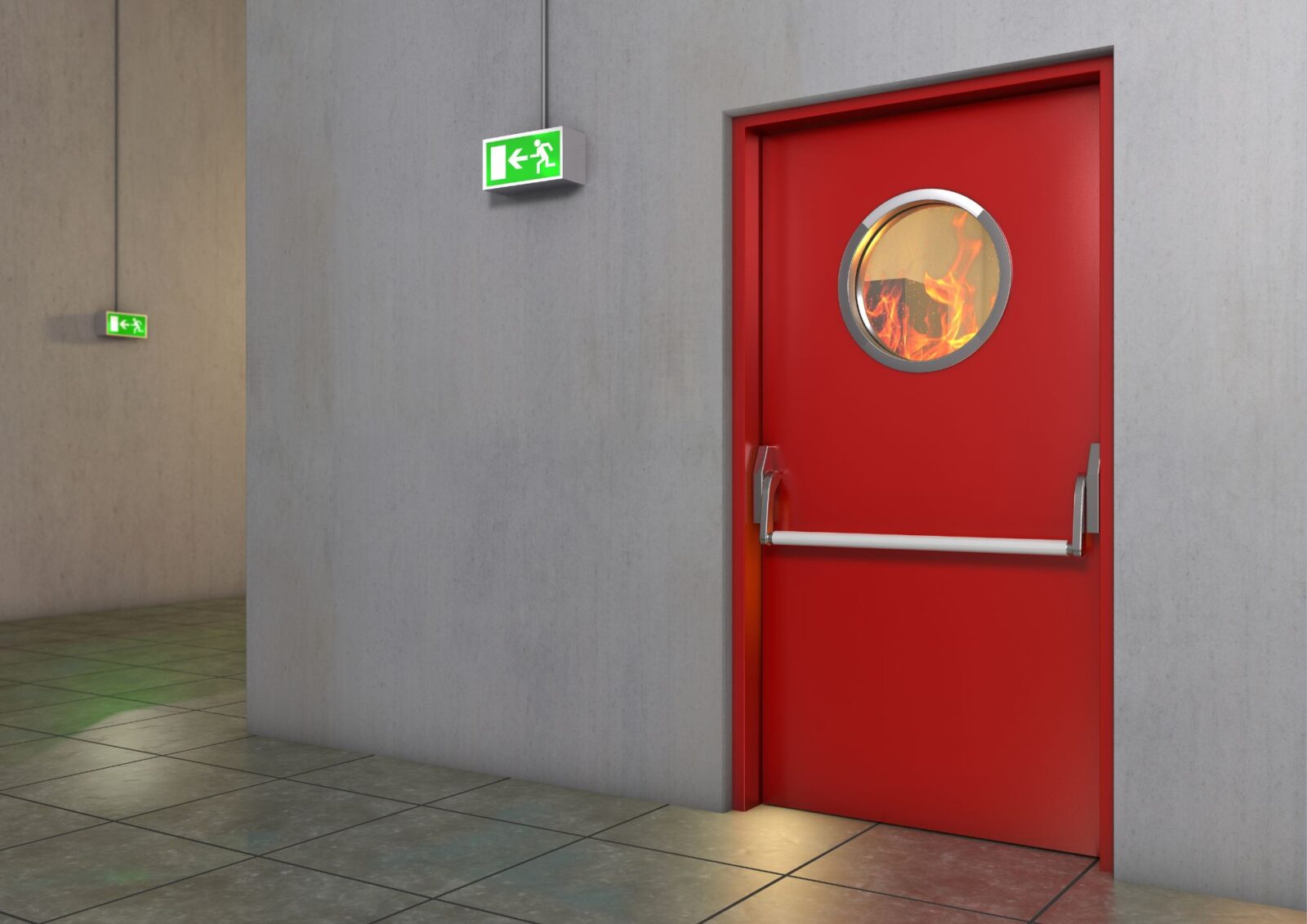When we think about fire safety, we often imagine fire extinguishers, alarms, or sprinklers, but one essential piece of equipment that plays a crucial role in keeping us safe is the fire door. Fire doors are designed to contain fires, preventing them from spreading quickly, and providing occupants with a safe exit. But how do they work, and what makes them different from regular doors?
What Are Fire Doors?
Fire doors are specially designed doors that help limit the spread of fire and smoke in the event of an emergency. They are made from materials that are more resistant to fire than standard doors, such as solid wood, metal, or a combination of both, and are equipped with a fire-resistant core. These doors are commonly found in areas that need to be protected from fire, such as hallways, stairwells, and between different parts of a building.
The primary goal of a fire door is to act as a barrier between the fire and the rest of the building. In the event of a fire, it keeps the flames contained in one area, allowing people to evacuate safely and preventing damage to other parts of the property.
How Do Fire Doors Work?
Fire doors work by acting as barriers against the spread of fire and smoke. They are equipped with several important features:
- Fire-Resistant Materials
As mentioned earlier, fire doors are made of materials that can withstand heat and fire. The door’s frame, core, and even the hinges are designed to resist flames for a specified period, usually ranging from 30 minutes to up to 2 hours, depending on the door’s rating.
- Self-Closing Mechanism
Fire doors are equipped with self-closing mechanisms, like springs or hydraulic closers, which ensure the door shuts automatically. This is crucial because, even if the door is left open, it’s no longer effective at stopping the fire from spreading. Self-closing ensures the door remains shut during a fire and continues to perform its intended function.
- Seals and Gaskets
To help stop the spread of smoke and gases, fire doors are equipped with seals around the edges. When exposed to heat, the seals expand to fill the gaps between the door and its frame, which helps the door’s ability to prevent smoke and fire from escaping to other areas.
- Fire Door Ratings
Fire doors come with a fire rating that specifies how long they can resist fire. These ratings are typically expressed in time increments like 30, 60, or 90 minutes. This rating indicates how long the door can withstand a fire before it starts to fail, offering enough time for people to evacuate or for emergency services to arrive.
Why Are Fire Doors Important?
Fire doors serve a critical role in the event of a fire, especially in large commercial buildings, apartment complexes, or public spaces. Without fire doors, a fire could spread much more quickly, endangering lives and increasing the amount of property damage.
These doors help compartmentalize fire, keeping it contained within a single room or area and reducing the risk of the fire spreading through the building.
For example, if a fire breaks out in one part of a building, the fire door prevents the flames from spreading to hallways or other rooms, providing occupants with enough time to evacuate or for the fire department to respond.
Are Fire Doors Different from Regular Doors?
Yes, fire doors are definitely different from regular doors! While regular doors are typically made from lightweight materials like wood or glass, fire doors are constructed with fire-resistant materials designed to withstand intense heat. Additionally, fire doors come with features that ensure they close automatically and form a tight seal when shut—features that regular doors typically do not have.
Proper Maintenance of Fire Doors
To ensure fire doors remain functional when needed, proper maintenance is key. Here are some tips for keeping fire doors in good condition:
- Check the Door Regularly
Make sure the door closes fully and tightly without obstruction. If the door doesn’t close properly, it might not provide the protection needed during a fire.
- Inspect the Seals
Inspect the seals around the door. If they’re cracked or damaged, they won’t provide a proper barrier against smoke and fire. Make sure the seals are intact and replace them if needed.
- Check the Self-Closing Mechanism
Ensure that the self-closing mechanism is working. If the door doesn’t close on its own, it won’t be effective in stopping the spread of fire.
- Avoid Obstructions
Never block or prop open fire doors, as this defeats their purpose. They should always remain clear and be able to close fully when needed.
Additionally, regular maintenance (referred to as wartung brandschutztüren in German) is vital to ensure all components, such as the hinges and seals, are in proper working condition. This routine check-up ensures that fire doors perform effectively during an emergency, particularly in commercial buildings or places with heavy foot traffic.
Conclusion
Fire doors are one of the unsung heroes of fire protection in buildings. They provide an essential barrier between the fire and the rest of the building, giving people more time to escape and helping limit the damage caused by fires. Understanding how they work and why they’re so important, you’ll be better equipped to ensure your building is protected.
Remember, while fire doors are crucial, they only work effectively if they’re properly maintained. Regular wartung brandschutztüren is key to ensuring they perform at their best when needed most. Regular checks and care are essential to keeping them in top condition so that they can protect you and your property when needed most.






